On the wall of the corridor of the Christian Brothers school in Trim, Co Meath is a photograph taken in 1959. It shows an under-14 boys’ football team from the school.
Lined up in two rows of smiles and giddiness, sleeves rolled up in readiness, what we see is uncomplicated country boys living uncomplicated country lives a long time ago.
With one exception.
On the far left of the photograph, we see a boy standing clearly apart from, and some paces behind, the rest of his teammates.
He is a handsome boy with hair that is bristle-thick. He is conspicuously wearing a jacket over his football jersey. He is not smiling like the rest. His expression and posture are ambivalent.
The caption at the bottom of the picture identifies the outsider.
M Macarthur.
[ The murderer, the attorney general, the taoiseach and the birth of GubuOpens in new window ]
Malcolm Macarthur had one particular trait that became more and more apparent as I researched The Irish Times podcast series, Gubu, and, subsequently, my book, The Murderer and the Taoiseach. It was that he spent his life as an outsider: as a child, as an adult, always. You never got a sense he belonged anywhere, or with any community.
His family were themselves outsiders. In 1906, his grandparents, who had considerable wealth, decided to leave Scotland – almost on a whim – and bought a large estate and grand house in Co Meath. They had no relatives and absolutely no connection with Meath. Half a century later they were still considered “blow-ins”.
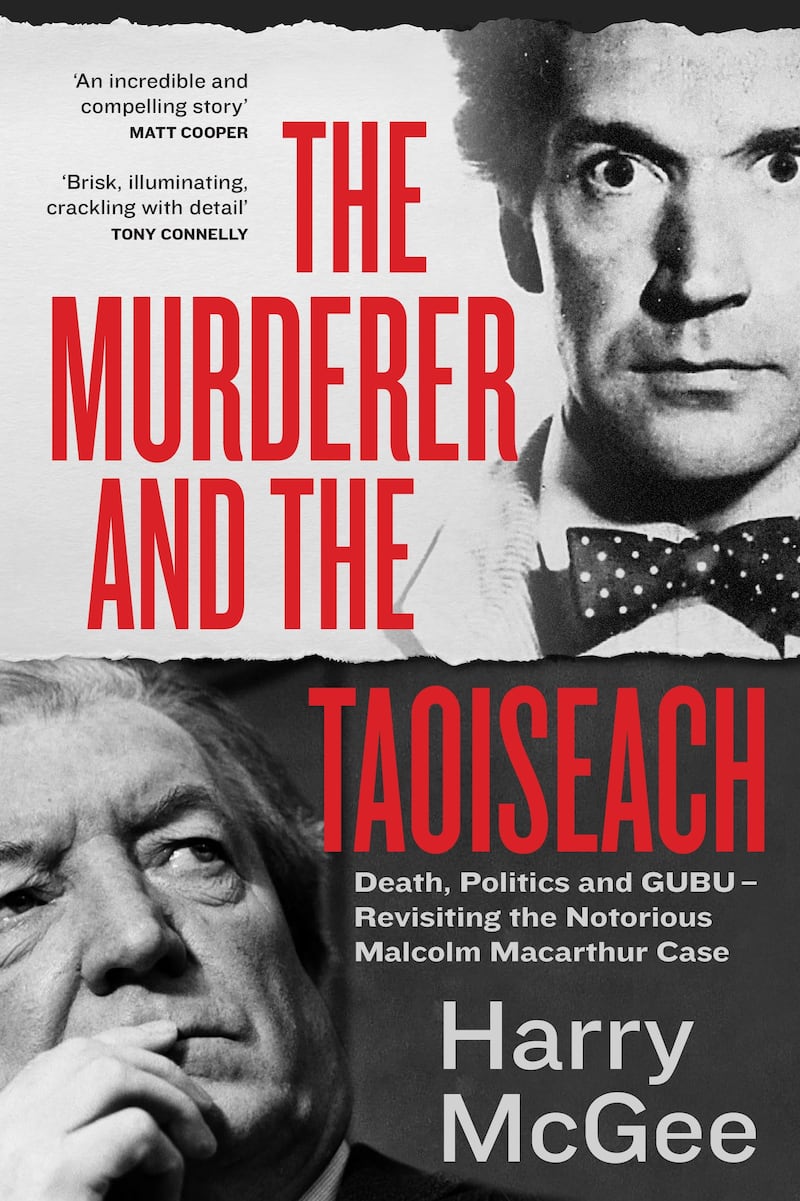
Malcolm, born in 1946, had a lonely childhood, minded by the housekeeper at the sumptuous Breemount House, and witness to the increasingly violent rows between his distant, aristocratic parents.
Waning family fortunes meant he did not go to the fee-paying Ampleforth College in England, but to the local Christian Brothers School in Trim, which had no pretensions to be anything other than ordinary. Macarthur was shy and bookish, did not like sport, and though well-liked by his classmates was never one of them. He took a degree in economics, in the small Davis University in California in the late 1960s. He was an outsider there too, a bow-tie-wearing dandy with a cultivated accent among the longhaired hippies and pot smokers.
After his father died in 1971, he inherited a considerable sum, equivalent to more than €1 million today. It allowed him to live the dissolute, aristocratic life he yearned for without having to work.
Macarthur hung around fashionable restaurants and bars, socialised with a bohemian set, presented himself as a kind of Oxbridge authority on astrophysics (which he wasn’t), and went full flâneur in his flamboyant clothing choices, with silk cravats, highly polished brogues and tweeds. Some people were even of the view that he was titled.
By the time the summer was out, he had brutally killed two innocent young people and caused the most sensational political scandal in living memory
He certainly stood out but, at the same time, he never really fitted in. Those who encountered him described him as distant, eccentric, withdrawn, arrogant, an oddball, a Walter Mitty type. At parties he would stand by himself at the edge of the room and would not speak unless spoken to, and only then, if he were interested in the subject.
“He was very aloof and very withdrawn. He’s not someone that you go and have a friendly chat with,” said one person who knew him and found attempts at conversation got nowhere.
For me, nowhere did Malcolm Macarthur stand out more starkly as a complete outsider than in Tenerife, where he, his partner Brenda Little and their young son moved in May 1982.
Given the indolent life he had lived, it was a surprise to learn they ended up living in a spartan holiday apartment in Los Cristianos, an industrial estate for mass tourism.
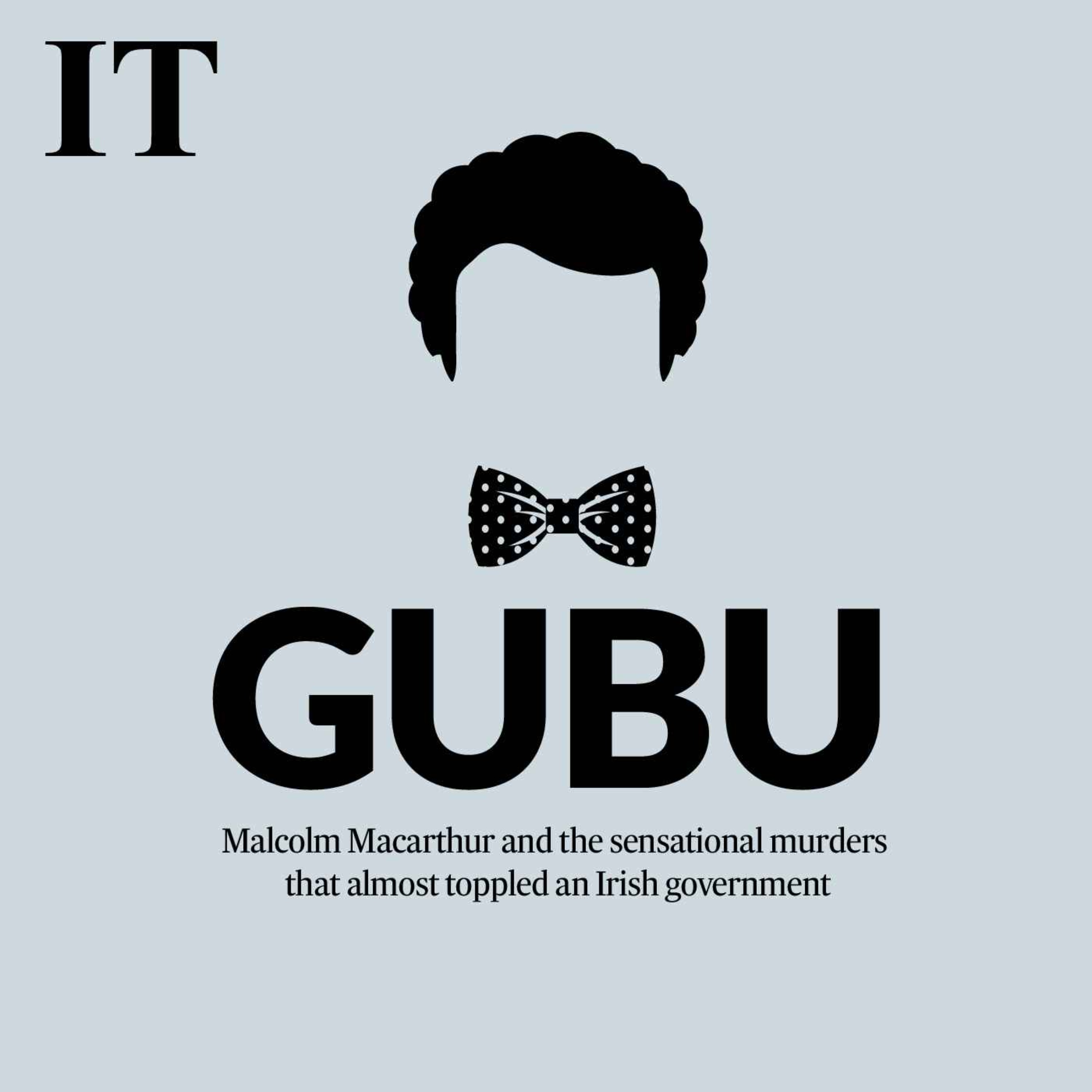
Episode one: The murder of Bridie Gargan
A killing shocks Ireland and prompts a manhunt that will eventually almost topple the government. Episode one of seven. GUBU is researched, reported and narrated by Harry McGee and edited by Enda O'Dowd. Sound mix by JJ Vernon. Title music by Orakhal. Graphics by Paul Scott
The landscape was arid, and so was its cultural life. The bookish and raffish Macarthur was a complete anomaly among the hordes of sun-seekers.
They moved there because it was cheap. Brenda Little knew money was tight, but she did not know her partner had frittered away all of his inheritance.
During the six weeks he was in Tenerife, Macarthur obsessed endlessly about his financial predicament. Then, reading reports in British newspapers about IRA armed robberies of banks and post offices, he decided to reinvent himself as a ruthless armed robber and go and “stick somebody up”.
It was outrageous. But it was from here that he embarked on a bloody and reckless escapade that would sear the summer of 1982 into the Irish common memory.
By the time the summer was out, he had brutally killed two innocent young people – Bridie Gargan and Dónal Dunne – and caused the most sensational political scandal in living memory, leading to the resignation of the then attorney general Patrick Connolly and bringing the Fianna Fáil government of Charles J Haughey to its knees.
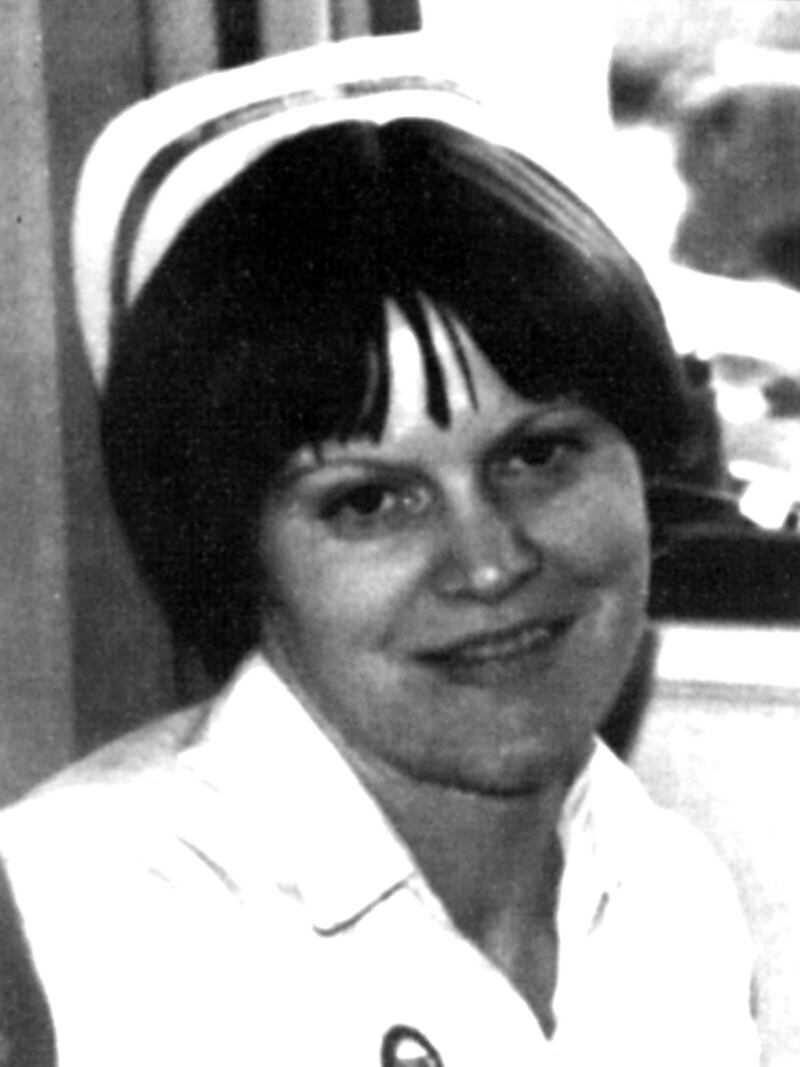
Macarthur slipped into Dublin by ferry on July 8th and stayed in an unprepossessing guest house in Dún Laoghaire, away from his usual haunts. “I did not want anyone to know I was in Ireland,” he said.
He grew a beard and assembled a ridiculous disguise, including a stalker’s hat, a heavy jumper and glasses that were of Mr Magoo thickness. He was dressed for winter during a prolonged heatwave. He thought he was incognito, but he was noticed everywhere he went. Clearly, Macarthur did not follow the advice of novelist GK Chesteron: “If you don’t seem to be hiding, nobody hunts you out.”
In an extraordinary psychodrama, he held affluent American Harry Bieling hostage for several hours in Killiney
On July 22nd, he began his brutal killing spree. He went to the Phoenix Park that day and bludgeoned 27-year-old Bridie Gargan to the point of death in order to steal her car. Two days later, in Edenderry, Co Offaly, he shot Dónal Dunne at point-blank range with the young farmer’s own shotgun.
His incompetence was obvious, but for investigating gardaí the killer was as elusive as the mysterious Keyser Söze in the film The Usual Suspects. He had no criminal record. He had no connection to the victims. Nobody knew him in Ireland save a small cluster of academics and well-to-do people. “He was well outside the realm,” said one of the lead detectives, Tony Hickey.
Macarthur had lived in a gilded cage all his life, and his knowledge of how things worked in the real world was minimal. In the end he chose rich people he knew as “marks” for his robberies. That meant, if successful, he would have killed the victims – otherwise they would have identified him. He was bungling, leaving a Hansel and Gretel trail everywhere he went. That was his undoing.
[ Dún Laoghaire news vendor had role in finding Malcolm MacarthurOpens in new window ]
In an extraordinary psychodrama, he held affluent American Harry Bieling hostage for several hours in Killiney. Bieling, sensing the danger, managed to escape from the house, in doing so saving his own life. Macarthur had told Bieling they had met before but Bieling could not remember him. He put gardaí in touch with a woman, Betty Braughan, who had organised parties for him and whom he thought might know Macarthur.
As it happened, Macarthur incriminated himself spectacularly the following day. He rang the astonished Bieling to say what he had done was a joke. Then he rang the Garda station in Dalkey to say what he did was a prank gone wrong. When the sergeant asked his name he blurted out “Malcolm Macarthur”. A little later, when gardaí described the man to Braughan, she immediately said “Malcolm Macarthur”.
Gardaí now had a name, but had yet to find out where he was hiding. After fleeing Bieling’s house, Macarthur had flagged down a car on the road and asked for a lift to an upmarket apartment development, Pilot View in Dalkey, where Connolly lived. When gardaí tracked down Macarthur’s last known address in Donnybrook, it was a flat once leased by Connolly. They staked out the penthouse flat in Pilot View that afternoon and spotted Macarthur there. As soon as Connolly arrived home, detectives stormed the flat and overpowered the killer.
Connolly was shell-shocked. He knew Macarthur through Brenda Little, who was one of his closest friends. He later recalled the moment he found out his house guest was wanted for two murders: “It is very difficult to exaggerate how dumbfounded I was,” Connolly told me when I interviewed him in 1992. (He died in 2016.)
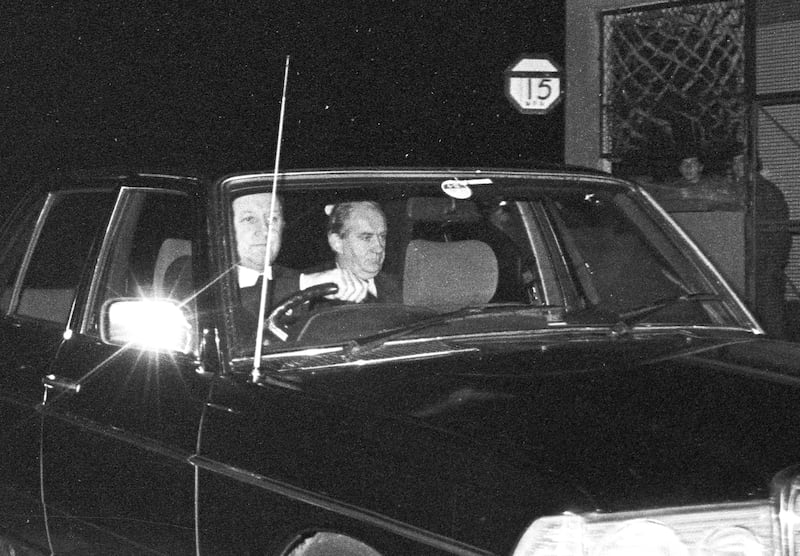
As it happened, the attorney general was due to go on holiday to the US the following morning. He badly misjudged the impact of a murder suspect being found in the home of the State’s top law officer. Haughey was on his holiday island of Inishvickillane. Connolly managed to get through to him on a bad line. It didn’t sink in with the taoiseach that Macarthur had been arrested in Connolly’s home. He gave his attorney general his blessing for his holiday. It was a monumental blunder on both their parts – especially so when Macarthur appeared in court the next day looking like an Agatha Christie character, with a spotted crimson bow tie.
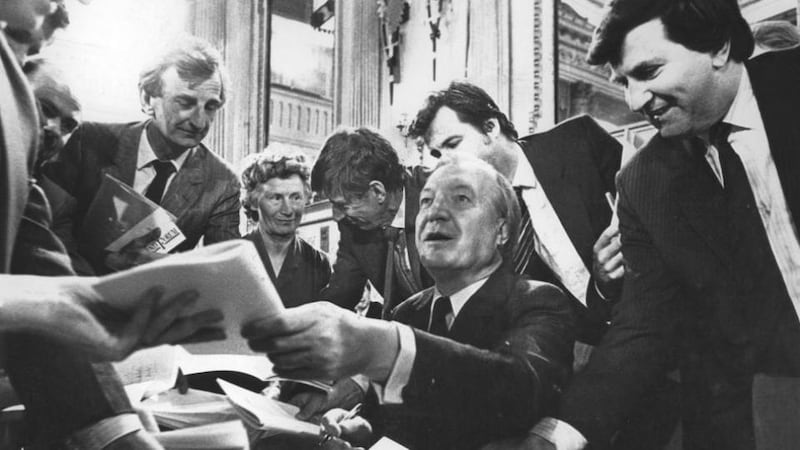
The media hounded Connolly all the way to New York. Haughey ordered him home and made him resign. The taoiseach held a press conference the next day at which he uttered the words that made up the famous Gubu acronym – Grotesque, Unbelievable, Bizarre and Unprecedented.
The affair all but downed Haughey’s ramshackle government. He faced a heave weeks later and the government collapsed in October.
What possessed him to do what he did will remain an enduring question – one that he himself perhaps cannot answer with any degree of acuity
Macarthur’s defence was led by Ireland’s most famous lawyer, Paddy McEntee. I discovered during research that he pursued the highly unusual defence of automatism, arguing that Macarthur had been in a fugue state during his killing spree and did not know what he was doing. Until the week before the trial in January 1983, it looked like the gambit might be successful. But a handwritten note found among Macarthur’s possessions had not been noticed by prosecution lawyers until it was pointed out to them by gardaí. It was a clear plot to kill his mother, Irene. With that, the defence of automatism collapsed.
In the event, the alternative approach of one murder conviction (and a nolle prosequi for the Dunne murder) also backfired. It caused outrage and added to the many conspiracy theories of cover-ups, of homosexual circles, of Haughey and his government hushing up an even bigger scandal. As it panned out, the case remained notorious for decades and any hope of early release withered on the vine. In the end, Macarthur spent 30 years incarcerated. Nowadays, he lives in Dublin and spends his time in bookshops and libraries, leading a quiet unobtrusive life. He has never apologised and never explained.
I did meet him over the past 18 months and spoke to him at length. He speaks with an Anglo-Irish accent. General conversation about life was fine, but whenever it strayed to the events of 1982 the shutters came down.
What possessed him to do what he did will remain an enduring question – one that he himself perhaps cannot answer with any degree of acuity. There was, at the very least, a disconnect from reality, and – more plaintively – from human empathy and understanding.
The other striking thing about the whole affair was that while Malcolm Macarthur and Charles Haughey never met, during that parched summer of 1982, their fates became inextricably linked. Forever after, Gubu would define both men, the murderer and the taoiseach.
The Murderer and the Taoiseach by Harry McGee is published by Hachette Ireland











